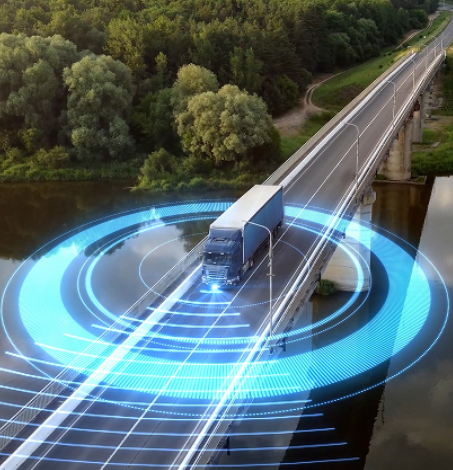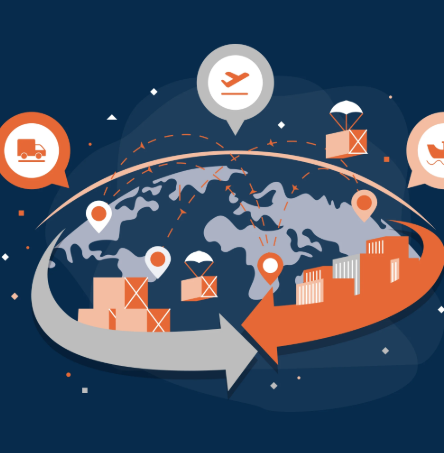Revolutionizing Cross-Docking: How AI is Enhancing Logistics Efficiency

In the world of logistics, efficiency is key, especially when it comes to cross-docking. This process involves transferring goods directly from incoming transportation to outgoing vehicles without storing them in between, ensuring swift and effective movement of products. However, cross-docking isn’t always as seamless as it sounds. To ensure everything runs smoothly, AI is now playing a crucial role, transforming the traditional process into a faster, more accurate, and cost-effective operation. Let’s dive into how AI is reshaping cross-docking and boosting logistics efficiency.
Understanding the Cross-Docking Process
Cross-docking simplifies logistics by minimizing the time products spend in transit or storage. The goods are unloaded from an inbound vehicle and immediately sorted before being transferred to an outbound vehicle. This process helps reduce storage costs and delivery times. However, the challenge lies in the need for tight synchronization between incoming and outgoing shipments, ensuring there’s no delay in transferring goods.
In traditional operations, managing these tasks manually can lead to errors, delays, and inefficiencies. As demand for faster deliveries increases, it becomes essential to streamline this process. AI offers solutions that tackle these obstacles by optimizing inventory management, improving sorting accuracy, and enhancing communication between different stages of the logistics chain.
5 Innovative AI Solutions for Cross-Docking
Here are five ways AI is optimizing the cross-docking process, making it more efficient and responsive.
1. Smart Inventory Management
AI revolutionizes inventory management by analyzing vast amounts of historical data and predicting demand fluctuations. This helps businesses maintain optimal inventory levels, ensuring they never overstock or run out of stock. AI systems use data from sales trends, market behaviors, and external factors to forecast future needs, thus ensuring that inventory is always at the right level to meet demand.
By continuously analyzing real-time data, AI can adjust stock levels dynamically, allowing businesses to respond to shifts in market conditions instantly. This reduces storage costs while preventing stockouts, leading to more efficient operations.
2. Real-Time Yard Management
Managing the flow of incoming and outgoing shipments is a key challenge in cross-docking facilities. AI is used to monitor yard activity in real-time, tracking the movement of vehicles, shipments, and personnel. With the help of sensors and cameras, AI can gather and analyze data, allowing managers to optimize dock door assignments, reduce congestion, and prevent bottlenecks.
By identifying the best times for vehicle arrivals and departures, AI ensures that cross-docking facilities operate smoothly, minimizing delays and improving throughput.
3. Predictive Maintenance for Equipment
Maintaining essential equipment like conveyor belts and sorting systems is crucial for smooth cross-docking operations. AI-powered predictive maintenance uses real-time data from sensors embedded in equipment to predict when parts will need attention. By analyzing patterns such as temperature changes, vibrations, and energy consumption, AI can detect early signs of wear and tear, preventing unexpected breakdowns and reducing downtime.
Proactive maintenance means businesses can plan repairs during off-peak times, reducing operational disruptions and ensuring the facility runs efficiently.
4. AI-Powered Order Picking and Sorting
The order-picking process is vital in logistics, but traditional methods often face challenges with speed and accuracy. AI helps optimize picking by using real-time inventory data and algorithms that determine the most efficient route for pickers. By minimizing the travel time needed to collect items, AI-powered systems speed up order fulfillment while ensuring accuracy.
AI also helps in sorting by automatically categorizing goods based on factors such as destination, weight, or fragility, making the sorting process faster and reducing the risk of errors.
5. Dynamic Route Planning for Outbound Deliveries
Traditional route planning often uses fixed schedules, but this can result in inefficiencies due to changes in traffic, weather, or other unforeseen circumstances. AI addresses this by dynamically adjusting routes based on real-time conditions. By analyzing GPS data, weather forecasts, and traffic patterns, AI can suggest the fastest and most fuel-efficient routes for each vehicle.
This dynamic approach ensures that deliveries are made on time, with minimal delays, contributing to greater customer satisfaction.
The Efficiency Edge: How AI Transforms Cross-Docking Operations
AI isn’t just a tool for making cross-docking operations smoother—it’s a game-changer for overall logistics efficiency. Here’s how AI delivers significant benefits to the industry:
Improved Accuracy and Speed
AI reduces human error by automating repetitive tasks, such as sorting and inventory management. By using predictive analytics and real-time data, AI can handle complex decisions with accuracy, ensuring the right items are picked and delivered on time.
Reduced Costs
With AI’s ability to optimize storage, reduce labor needs, and streamline maintenance, businesses can cut down on unnecessary operational costs. Predictive maintenance ensures fewer breakdowns, while smart inventory management prevents overstocking, reducing storage costs.
Increased Throughput
AI helps to maximize the flow of goods through the facility by ensuring that all systems—picking, sorting, and delivery—are working in harmony. With improved coordination and smarter resource management, warehouses can handle more volume with the same workforce, increasing overall throughput.
Faster Delivery Times
AI’s real-time tracking and dynamic route planning ensure that products move faster through the logistics chain. With optimized inventory levels and minimized delays, goods can reach their destination quicker, improving customer satisfaction.
Wrapping Up
AI is changing the cross-docking process by making it more accurate, faster, and cost-efficient. From smarter inventory management and predictive maintenance to real-time yard management and dynamic route planning, AI solutions are revolutionizing how goods move through logistics networks. As these technologies continue to evolve, the potential for greater efficiency in cross-docking and beyond is immense. Businesses that adopt these innovations can expect enhanced productivity, reduced operational costs, and improved customer service, making AI a crucial tool for success in the modern logistics industry.




